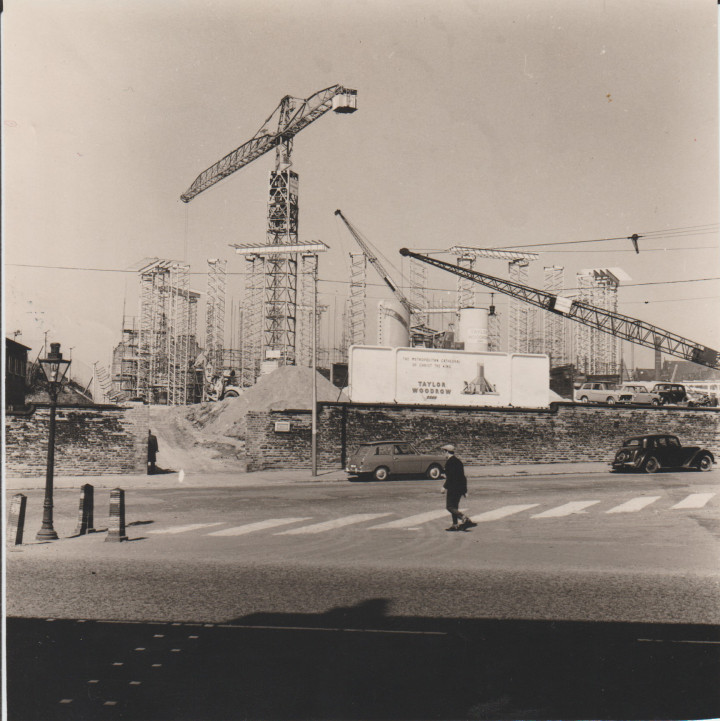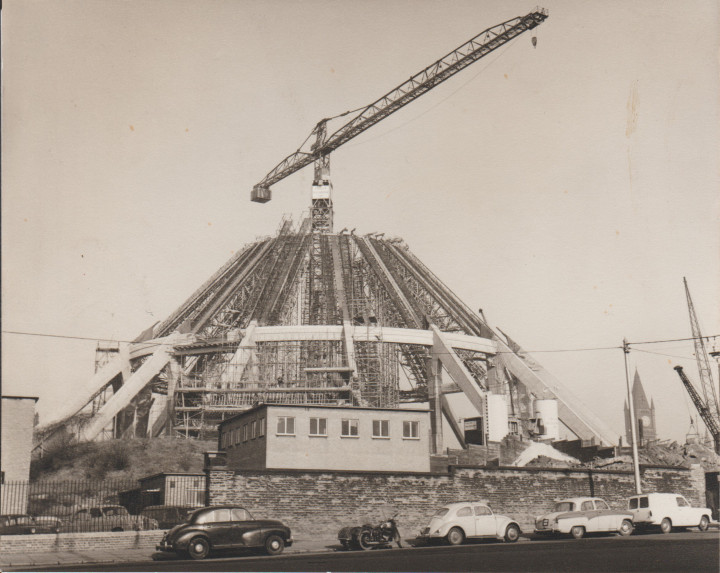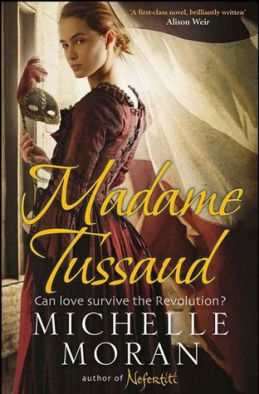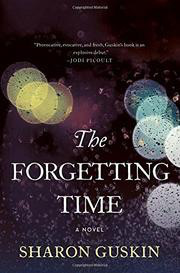Writing in the mid-1960s in his examination of the place of art in Liverpool (Art in a City) John Willett observes:
“In 1967 the new Roman Catholic cathedral will be consecrated. With its novel circular plan, like a vast upturned funnel, its windows by John Piper and Patrick Reyntiens and its sculptures by William Mitchell, Frederick Gibberd’s great building quite possibly will take the breath away, and seems likely to provide for some years a religious-artistic sensation to rival Coventry.”
It was a striking addition to the cityscape and was described by Liverpool architect Quentin Hughes as “undoubtedly the major modern architectural attraction of the city”. At the time it was being built this maybe wasn’t so clear. In the 1960s Liverpool was undergoing a period of renewal that promised and threatened much in terms of architecture. City councillors had long been obsessed with constructing a ‘worthy’ civic centre and had identified the back of St George’s Hall for the location of this. By the 1960s this vision had taken on a grandiose form and encompassed an enormous series of buildings that would have snaked around the centre of the city. With a huge cross-shaped building impinging on St John’s Gardens behind St George’s Hall, Colin St John Wilson, the architect responsible, promised:
“…this is not an abstract building in space it is part of a whole texture – buildings, roads, Mersey Tunnel, Lime Street Station, with energy passing through a web of paths and creating points of focus. That’s the essence of it, to see this thing not isolated but as part of a whole traverse across the city.”
In the end most of this did not get built except for a ridiculous walkway at the back of the museums. But in the context of all this potential upheaval the new, defiantly modern Catholic Cathedral began to take shape. These two pictures by amateur photographers capture the process of building in the early 1960s:

As the “vast upturned funnel” began to take shape it must have been a challenging sight for passers-by. Certainly quite unlike anything else in Liverpool and a considerable contrast to every other church building in the city:

The building was completed and consecrated on 14th May 1967. In the Architectural Review of June 1967 Nicholas Taylor spoke of the new building’s “challenging relationship with Sir Giles Scott’s Catalan Gothic splendour for the Protestant ship-owners further along the ridge”. He also went on to draw a parallel with the other great post-war English cathedral of Coventry:
“The loosely defined image of the ‘big top’ or ‘wigwam’ will probably prove as big a success with the people in general as Spence’s Coventry, and there are already signs that it may acquire the same identity with Liverpool’s own civic image that Bertrand Goldberg’s Marina City towers have with Chicago’s.
The reason is that it expresses with uncommon force one particular historical emotion: at Coventry it was the War Memorial with its symbolism of Sacrifice in the ruins and of Resurrection in the new church; at Liverpool it is the ecclesia triumphans of the Foleys and O’Reillys, a symbol of Catholic kingship riding high above the former Protestant ascendancy of merchants in the quaysides below.”
In some ways this analysis seems both patronising and sectarian although it is entirely understandable in the context of the times. But, in my view at least, the building expresses something more positive and is a hugely impressive spiritual space, a place worthy of pilgrimage. A rather more worthwhile legacy of the 1960s than what the city planners envisaged elsewhere.
At the time of its opening the council arranged for this floral decoration to adorn the roundabout in front of the Adelphi Hotel at the end of Lime Street. In the distance you can see St George’s Hall and plenty of evidence of ongoing construction work. And at the now demolished Futurist cinema they were showing Dr Zhivago:

I’ve written before about the Metropolitan Cathedral:
https://velvethummingbee.wordpress.com/2015/06/21/liverpools-metropolitan-cathedral/
and also about Hope Street Unitarian Church which stood midway between where the two cathedrals have been built:
https://velvethummingbee.wordpress.com/2015/05/17/the-church-on-hope-street/
The three images above were all acquired on eBay for 99p. The photograph at the top of the page is one I took from the top of the Anglican Cathedral. Hope Street Church stood where the square-shaped white building stands at the bottom of the picture on the right hand side of the main road.
Advertisements Share this:




